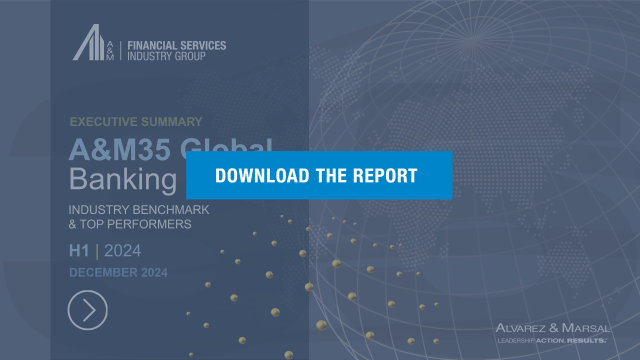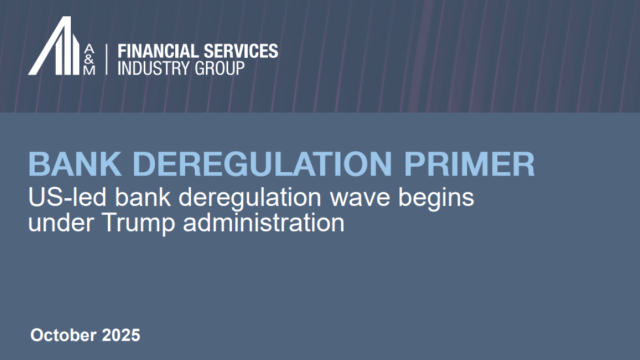Report: A&M35 Global Banking Pulse H1 2024
The A&M35 Global Banking Pulse (“A&M35”) H1 2024, aims to help banking executives stay ahead of the most significant banking trends.
A&M35 evaluates bank performance across five categories: Growth, Revenue, Efficiency, Resilience, and Market Value Creation. The report provides a comparative analysis of the performance of the top 35 banks across North America and Europe to identify trends and insights shaping the future of the banking industry.
Key highlights:
- North American banks are outpacing their European peers in revenue generation, with net interest margins (NIM) of 1.8% compared to just 1.2% for European banks. Net fees and commissions are also 60bps higher in North America. As a result, North American banks can extract 50% more income from banking services than their European counterparts.
- North American banks significantly outperform their European counterparts in revenue and business productivity, while European banks lead in cost-to-income efficiency due to stronger cost reduction efforts post credit crisis. European average cost-to-income ratio of 55%, outperforming U.S. banks’ 62%.
- Overall profitability is similar with North American banks generating an average ROE of 11.9%, compared to 11.3% for European banks. However, the valuation gap remains large. North American banks are trading at 1.4 times book value, while European banks lag at 0.9 times. This is due to higher investor confidence on earnings sustainability for North American banks combined with European regulatory and economic headwinds.
- European banks retain stronger capital positions, with an average CET1 ratio of 14.5% compared to North America’s 13%, reflecting stricter regulatory requirements and lower capacity to distribute earnings for European Banks. MREL levels for North American banks at 30% are 6% lower than that of European banks.
The findings highlight fundamental differences in the structure and priorities of banks on either side of the Atlantic:
- Regulatory environment: North American banks operate under capital-light models with greater flexibility in generating returns, while European banks face stricter capital requirements and regulatory costs.
- Market structure: Wider credit spreads and fees in North America contribute to higher revenue, whereas European banks contend with compressed margins due to lower interest rates and less commission power.
- Efficiency initiatives: European banks have made significant strides in streamlining operations, leveraging digital transformation to offset legacy inefficiencies and reducing workforce.
For the topline findings, access the Executive Summary of the report below:

For the full 80+ page in-depth analysis, or to discuss any of the findings, please:
“North American Banks account for 64% of total market capitalisation while European banks represent just 36% in our report. This significant valuation disparity is explained by structural market power, scale and regulatory differences. We expect increased M&A activity in large European banks aiming at increased scale." - Fernando de la Mora, Financial Services Industry Group (FSIG) Co-Head, EMEA







